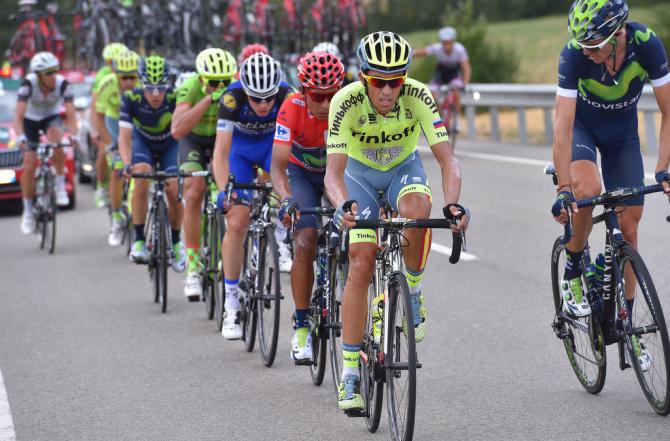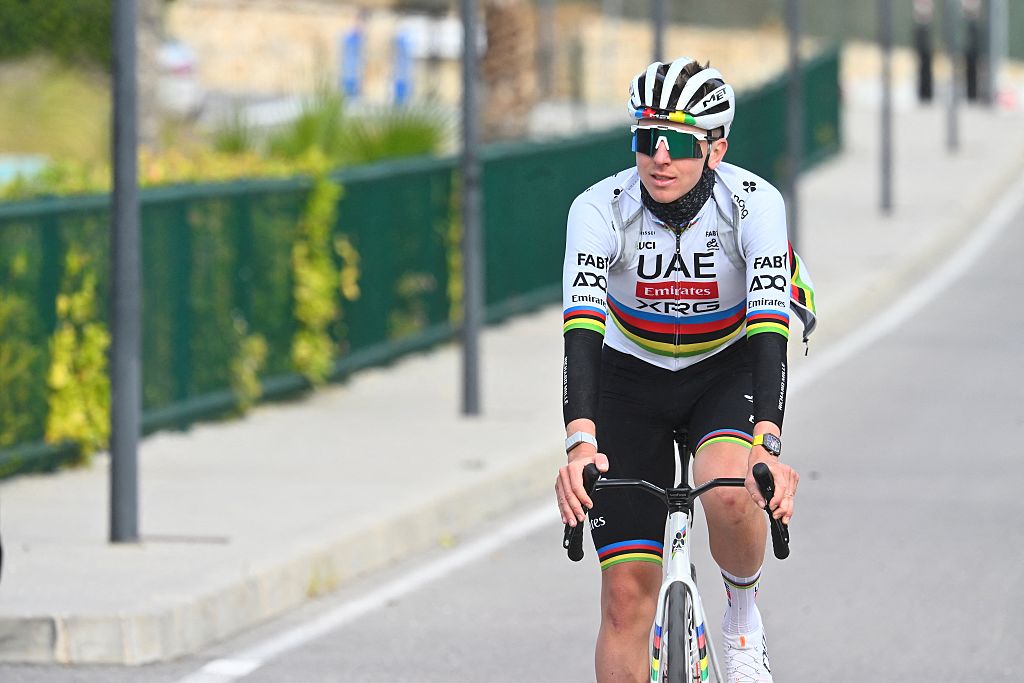Vuelta a Espana: How Quintana and Contador tore up the script
Gaps widen but anything can still happen in the race's final week
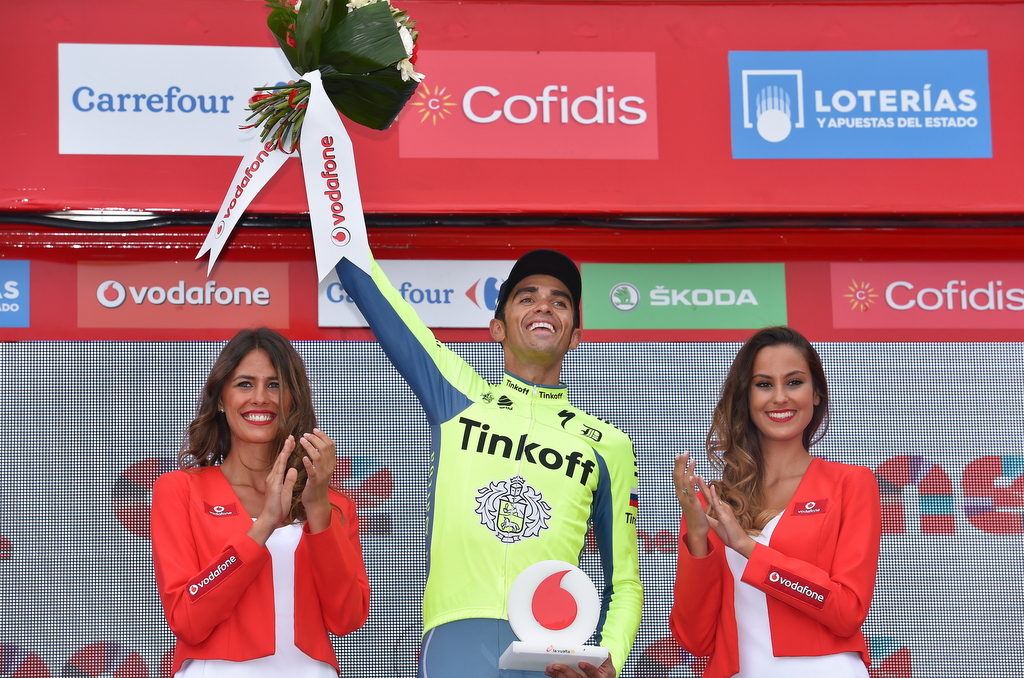
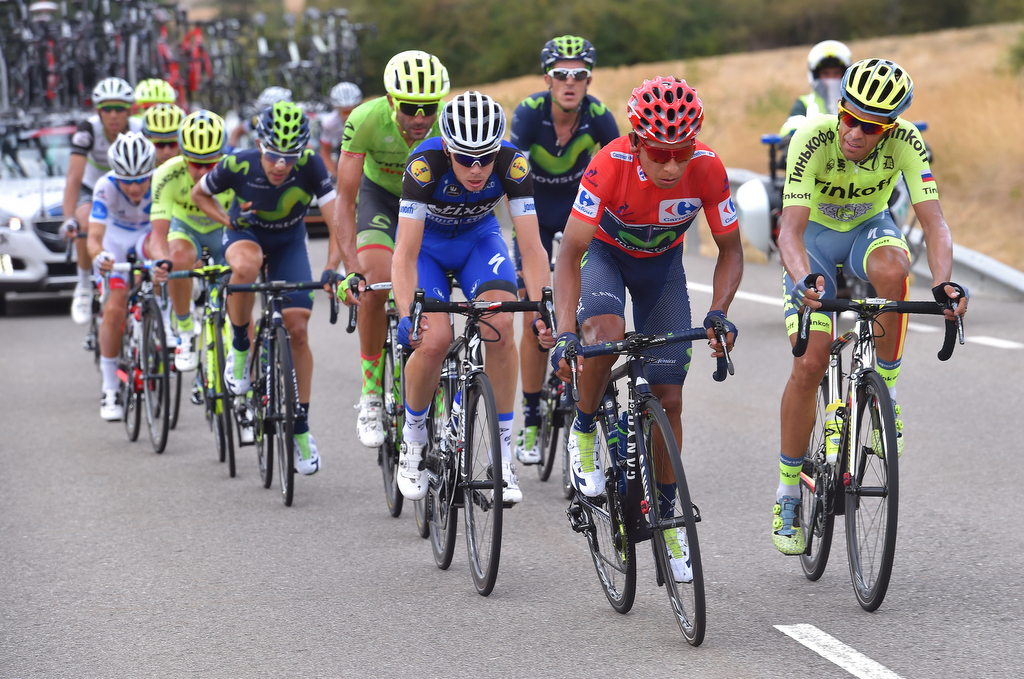
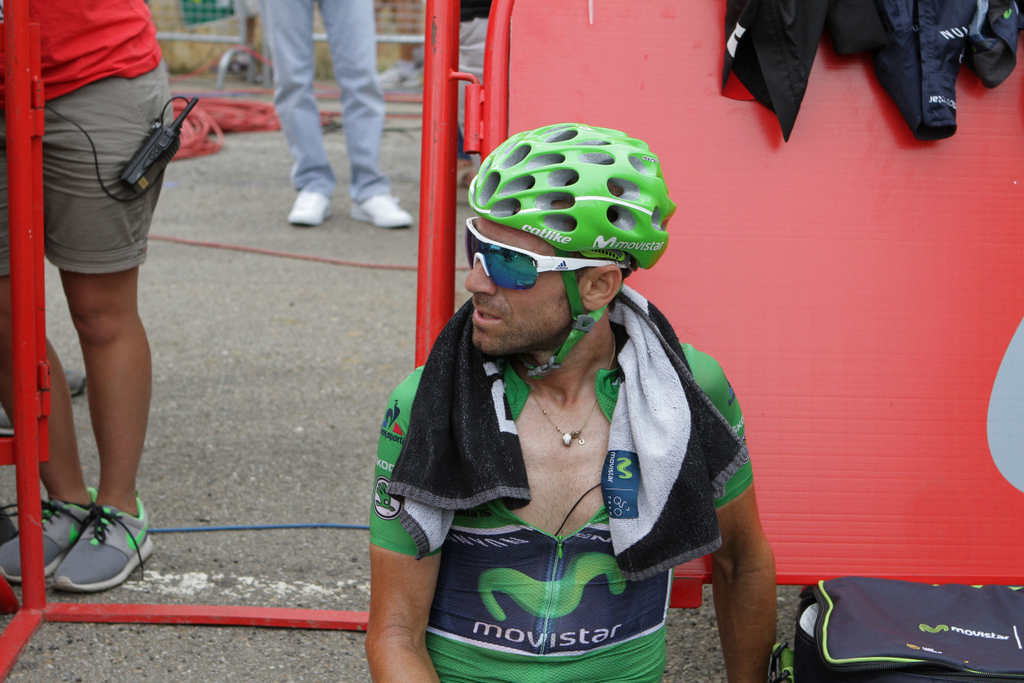
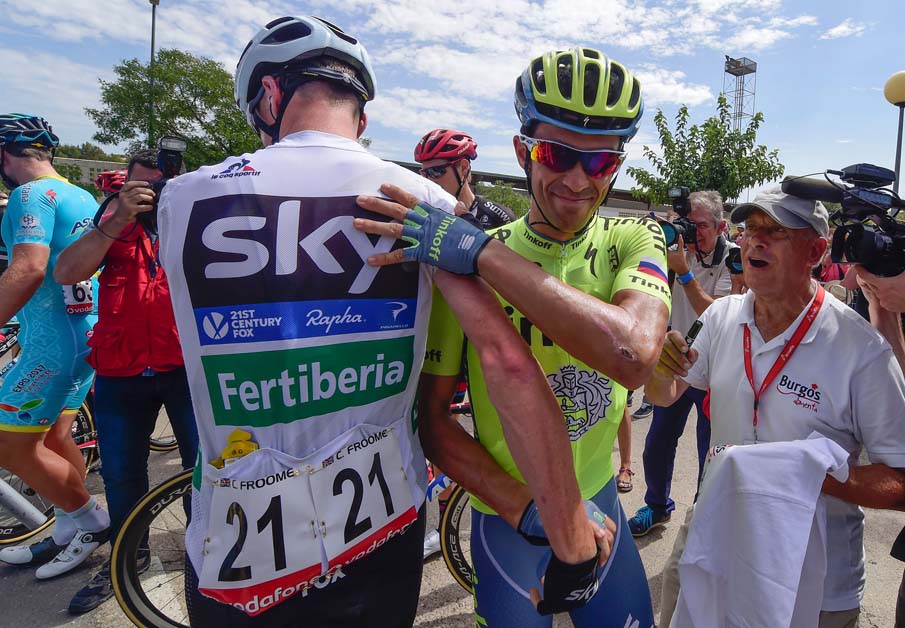
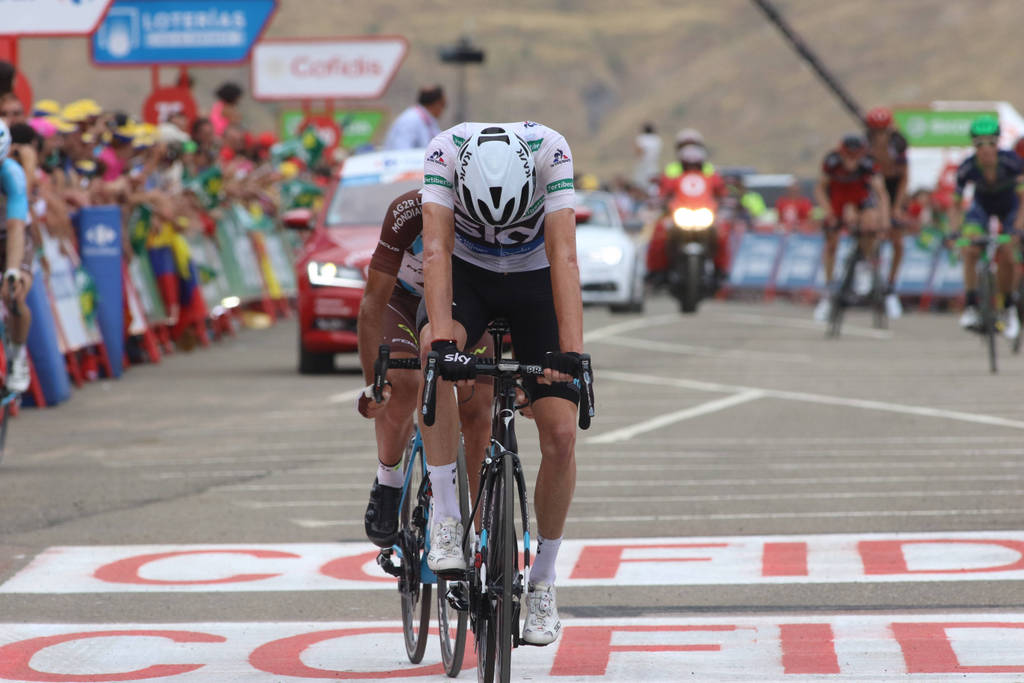
Back in the Vuelta a Espana's first rest day, longstanding Movistar manager Eusebio Unzue predicted that "before we get to Madrid for sure we'll see Alberto pull off one of his in-house specials."
Vuelta a Espana: Quintana gains time on Froome in spectacular fashion
Froome: I'm not just going to give up on Vuelta a Espana
Vuelta a Espana: Simon Yates expects hard-fought final week
Drucker joins list of debutant stage winners at 2016 Vuelta a Espana
Quintana: My rivals are still racing to win the Vuelta a Espana
Contador: Mas de la Costa stage will be one of the toughest of the entire Vuelta a Espana
Sure enough, on stage 15 of this year's Vuelta, Contador tore up the usual script and replaced it with a textbook manoeuvre of his own. The Spaniard made an attack that began almost as soon as the stage did, and which, in a snowball effect, produced a ripples throughout the Vuelta's GC. It barely matters which crystal ball Maestro Eusbio," as one Colombian journalist deferentially calls the Movistar manager [along with Campeón Nairo [Quintana] and Campeón Alejandro [Valverde], had been using prior that rest day. Unzue's Yoda-like clairvoyance as to where the Vuelta Force could lie, in this case for one inoffensive-looking Pyrenean stage, proved spot on.
Stage 15 did look inoffensive on paper, particularly in comparison with the mammoth Tour de France-like epic of the previous day, with its four massive Pyrenean cols and 196 kilometres, culminating on a household name for cycling fans of the Aubisque. That, in turn, was preceded by a 213 kilometre trek across the Basque Country, the longest stage in the Vuelta and 3,720 metres of vertical climbing - which could have been the scenario for another epic, had the peloton not collectively downed tools.
And stage 15? A comparatively 'piffling' - but only comparatively - third category climb, followed by a second and a first, none of them steep, all of them on relatively straightforward broad, well-tarmacked roads. The last, Aramon-Formigal, incidentally, wins the unofficial prize for the dullest 'top-level' climb of the Vuelta, 10 kilometres of smooth, steadily rising A road followed four kilometres of a rougher, more challenging, mountain lane. But the last segment was hardly the usual side-of a-house-in-tarmac-format that the Vuelta organisers like to use as their final climbs..
In fact, the last ascent of the 14-kilometre Aramon-Formigal, previously climbed twice in the Vuelta a Espana, is only vaguely famous (for those looking hard for a reason) for being the Vuelta's first ever summit finish, back in 1972. That day, Spanish climbing legend Jose Manuel Fuente aka El Tarangu, already a double stage winner in the Tour de France and King of the Mountains in the Giro d'Italia, first shone in his home Grand Tour.
Earlier on the Formigal stage, Fuente went on a joint attack with Spain's Jose Grande, and then dropped Grande on the Monrepos climb. As he opened a huge gap on the field, Vuelta boss Luis Bergareche drove up behind him and pleaded with Fuente's sports director, Anton Barrutia, to tell him to stop because in Bergareche's opinion Fuente was not famous enough to warrant such a prestigious role as leading the Vuelta.
To his credit, Barrutia ignored him, even though he had four riders in the top four places overall - Txomin Perurena, Mikel Mari Lasa, Jesus Manzaneque and Jose Antonio Gonzalez Llinares. By the time the race reached the summit of Formigal, with an overall advantage of nearly nine minutes, the Vuelta was almost in the bag for Fuente.
The latest race content, interviews, features, reviews and expert buying guides, direct to your inbox!
A race-defining breakaway
Can one say the same for Quintana and Master Eusebio? Is the Vuelta over, bar the shouting? Only this week will tell given the multiple opportunities for Chris Froome's and Orica-BikeExchange's forces to strike back are there aplenty. The Vuelta's GC was rocked badly by the Contador inspired rebellion, but the top three names remain the same - Quintana in the lead, Froome in second, and Esteban Chaves (Orica-BikeExchange) in third.
So why does it matter? Because, after all the dust had settled and the usual media talk of rolling back those years to the golden age of cycling had settled, it was the margins that have widened considerably thanks to stage 15, whilst the second part of the top 10 on GC has mutated. Chris Froome's gap of 54 seconds down on Quintana tripled to 3:37, and Chaves, in third, went from 2:01 down to 3:57. Further back, Simon Yates (Orica-BikeExchange) dropped from fourth to fifth, while no other rider in the top ten remained in the same position overall. Team Sky's Leopold König dropped from fifth to 31st as part of a collective defeat that will probably take a while for the British team to digest.
Contador, previously a nondescript sixth, is within five seconds of third place overall, Cannondale-Drapac have doubled their representation in the top ten, and so on and so on. Froome's chances of winning the Vuelta have shrunk significantly, though it would be very unwise to write him and Team Sky off. As Yates pointed out, there are plenty of riders with a point to make in the last week, and not just Team Sky. Then there was the 'minor' matter of 93 riders being re-instated after failing to make the time cut, 13 of whom filled out the top spots of the following day's stage. In terms of the GC, though, Quintana has taken a huge, but not definitive, step towards final victory, when on Saturday evening it looked as if Froome had the race all but wrapped up in his favour.
So how did it all happen? For the record, the fourteen riders in that crucial break were three from Movistar: Jonathan Castroviejo, Ruben Fernandez and Quintana, three from Tinkoff: Alberto Contador, Ivan Rovny and Yuri Trofimov, the current King of the Mountains classification, Kenny Elissonde (FDJ) and the outright winner of the same ranking in 2015, Omar Fraile (Dimension Data), Fabio Felline (Trek-Segafredo), Matvey Mamykin (Katusha), Gianluca Brambilla and David de la Cruz (Etixx-QuickStep), Davide Formolo and Moreno Moser (Cannondale-Drapac).
That the attack was Tinkoff-inspired, for all Movistar's different opinions (Valverde said it was planned on that climb, Quintana not), is pretty much clear. On a downhill section some six kilometres out from the start, Contador - who said he looked through the route book and picked the spot whilst sitting in the team car after the Aubisque the night before - opted to go for it. At which point chaos broke loose, with groups quickly fragmenting across the stage tarmac.
As former Vuelta leader and stage winner De la Cruz puts it to Cyclingnews, "Both Brambilla and I had the idea of getting into the break for the idea of going for the stage win, and then the general classification was good for me. I knew it was going to be a very hard start to the stage after such a tough Saturday, and that left a lot of riders suffering, so I knew would be nervous, and we went out with the idea of getting in a break. I started out in the middle of the bunch, but the speed got higher and higher, so I worked my way through to the front, and then suddenly I was a little surprised to see we had gone clear and I was in the same move as Alberto, not what we expected. But then Alberto and Nairo, all with their team-mates, were there."
"Alberto and Castroviejo did most of the work in the break itself, but it was Alberto who organised it all, who started it off and it was simply up to us to follow him. He was the one who really dealt with it all," Omar Fraile added to Cyclingnews.
Other teams were looking for GC changes, apart from Movistar and Tinkoff. "The ideal situation was to win the stage with Davide Formolo but he was not on his best day, so that didn't happen, but we also wanted to burn out the GC guys around Andrew [Talansky] and in that sense being in the break with two guys was ideal," Cannondale Drapac's Johnny Weltz added.
"We wanted to build up the lead, so we collaborated to burn out Team Sky's troops and then with Andrew in the chase group we could punch at them from behind, even if Astana were working behind to protect their position."
Contador leads the charge
The lead, in the first kilometres, stretched very fast, to almost two minutes. Contador, much more active than Quintana, could be seen riding up and down the length of the break, egging the riders on and himself taking big turns at the front. His two team-mates, together with Castroviejo and Fernandez, did a lot of the work. Behind, as Froome and teammate David Lopez, along with Orica-BikeExchange and Astana - set alight in their desire to try to defend Michele Scarponi's ninth place - worked hard. The gap would ebb upwards, drop back a little, then ebb up further. Sky, split into three different chasing groups behind Froome and with minutes between, and they only had López to support Froome directly. Although, others were keen to maintain the status quo.
"From first thing in the morning, to predict something like that would have been a dream, but when it splits up like that and you see the Sky guys are struggling so much, then you start to believe in it quite fast," Weltz adds. "A start like that on a nasty road like that, we had done seven hours the day before and if you take it a little bit easy then you get the punishment straight away and it's very difficult to repair."
By the time it reached the 80 kilometres to go mark, the gap was up to two minutes, and around the half way point of the stage, it reached its maximum of three. Behind, there was some hard driving by Astana and Lopez, and a spectacular Samuel Sanchez-led descent over the second category Cotefablo, which saw the gap drop down to two minutes. But, by then, the long series of false flats beginning at the foot of the Aramon Formigal had begun, Lopéz had long gone and the chasing was increasingly down to Astana.
In contrast, it was only on the Aramon-Formigal that the leading break began shedding units and its' cohesion lasted until the last five kilometres. The gap, therefore, stayed at around two minutes. "We stayed all together a long way. You have to bear in mind that a stage on the 15th day, after such a hard start, is naturally going to have a lot of riders who are strong," De la Cruz said. "At the same time, everybody had something to get out of it, Omar Fraile was going for the mountains, so was Elissonde, then Tinkoff, Movistar and Cannondale, we all had something to gain. It was easy to collaborate.
"At first, seeing the intensity of the first kilometres, I thought it was going to be very tough, we could end up paying at the end of it, it was impossible to go so fast. But it was equally crazy fast behind, they were losing riders at the first. From about halfway on, I thought, this is going to stick. Contador was really interested, and he commands a lot of respect. Whenever he talks, people tend to listen and act as a unit . He talked to absolutely everybody, insisting that it could work out, he was really the guy who sorted things out in the first part of the stage,
As Fraile saw it, "[Movistar and Tinkoff] were handling the real pressure in it, I didn't have too much work to do, I sat on a lot of wheels, but I did go through occasionally because it did benefit all of us and although I was a bit out of it at the end, we could fight for the top five which was important for all of us as well."
The situation on the final 25 kilometres, bizarrely enough, was somewhat flatter. The gap was all but settled, despite Astana's best efforts behind. Contador, having worked so hard early on, suffering from cramps, and with his climbing legs still not at his best, dropped back as the stage entered the final kilometres. Froome, although wobbling on the final kilometres, was strong enough to hold the gap to 2:37. The damage had essentially been done in the first two thirds of the stage.
For Contador, there was no outright leadership in the Vuelta to celebrate, as there had been in Fuente Dé, although a podium, previously all but out of reach, is now a possibility. For Quintana, the Vuelta his now his to lose. For Froome, the struggle to become the first British winner of the Vuelta a Espana is looking far harder, though not impossible. For the GC, the consequences are multiple and its reputation for dramatic, mercurial racing is strongly reinforced.
And for fans, the only question is how long it will be before they can enjoy the spectacle of a stage where, as Spanish newspaper El País put it, "as much was decided at the very start of the day as it was as the very end."
Alasdair Fotheringham has been reporting on cycling since 1991. He has covered every Tour de France since 1992 bar one, as well as numerous other bike races of all shapes and sizes, ranging from the Olympic Games in 2008 to the now sadly defunct Subida a Urkiola hill climb in Spain. As well as working for Cyclingnews, he has also written for The Independent, The Guardian, ProCycling, The Express and Reuters.
